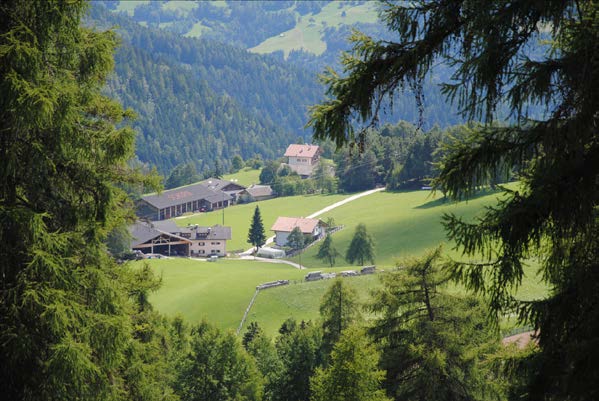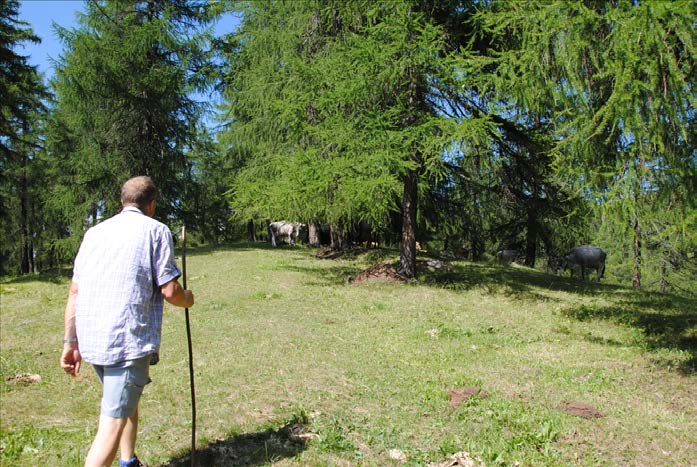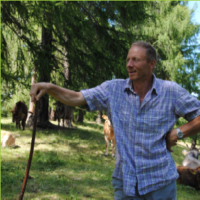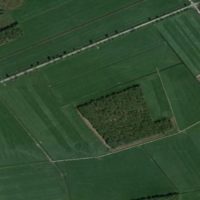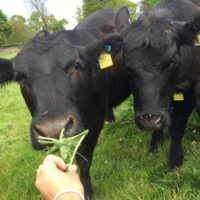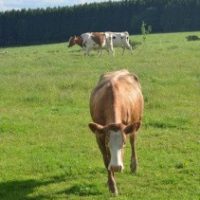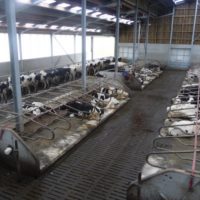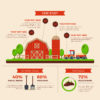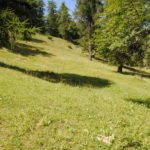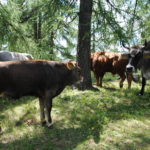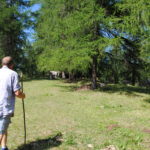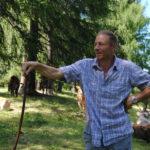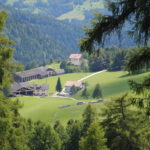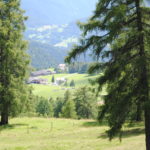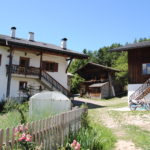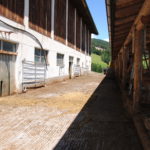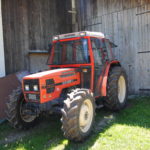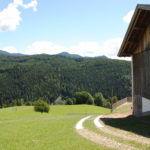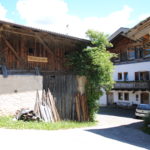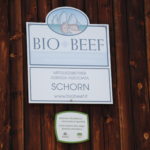Description
Background
Until 2006, the organic farm was a conventional dairy farm. After the conversion in 2006, suckler cows and cattle for fattening are kept. Several aspects were decisive for this change from milk to meat production: On the one hand, almost half of the 24 hectares of grassland are not in the immediate vicinity of the farm. In addition, these more distant areas are rather meager pastures, which are not so well suited for milk production. On the other hand, this allows running the farm on a part-time basis, which is easier to do with cattle fattening than with dairy farming. For the farmer, the introduction of grazing was an additional essential point, because if the full potential of grazing is used, he considers grazing systems to be the most cost-effective forms of livestock husbandry. The greatest advantage of grazing is certainly the saving of working time. About half of the forage required for the animals has no longer to be mown, dried and collected, but is used by the animals directly on the pasture. Since the farmer wanted to establish a closed nutrient cycle on his farm as far as possible, no concentrates are fed to the animals and no off-farm forages are purchased, thus avoiding excessive off-farm nutrient inputs.
Detailed description
The stable was converted into a loose housing stable with an accompanying outdoor paddock. An increased animal welfare in the stable is provided by the outdoor paddock, a mobile wall that, if open, allows the cubicles to receive more sunlight as well as neck brushes, which are adjusted to different animal heights. Despite being kept in loose housing, the animals are not dehorned. A high quality of the roughage is achieved by means of an effective barn-drying system. During the grazing period, the animals are not additionally fed. During the winter months, they receive only hay from the farm’s own grassland, i.e. they are not fed silage either.
All grassland areas are grazed, partly in combination with mowing: The pastures near the farm are grazed once in spring and once in autumn, the larch pastures during the summer months. The larches and other group of trees on the pastures provide sufficient shade for the animals if required. From the end of April on, the animals come out of the stable and can graze on the 12.6 ha of grazed permanent grassland areas around the farm. The grazing is carried out according to a rotation scheme on the basis of a flexible paddock system. The individual paddocks vary in size and are grazed by the animals in spring for around 21 days.
Following this first use by the animals, the areas have a rest period of approximately 21 days before the first cut. Since Mid-May, the suckler cows and the calves are moved to the larch pastures. They grow on soils quite poor in nutrients, but exhibit a high biodiversity around 40 species per 10 m². In autumn, the animals return to the areas close to the farm. They graze there until around the beginning of November before being brought into the stable for the winter months.
The innovation of this farm is certainly also a result of the flexibility of the pasture management. While good planning of grazing and mowing is essential, a certain degree of flexibility in terms of adaptation to the currently available grass budget as well as a rapid reaction to changing weather conditions during the growing season are required too.
The farmer is a member of the ‘Bioregio’ cooperative. The members of the cooperative are organic mountain farmers who keep suckler cows and want to jointly market the beef from the young cattle at local level. The cows of the breeds Tyrolean Grey and Original Braunvieh are crossed with a bull of the breed Limousin. The 10- to 11-month-old young cattle with a life weight of 360 to 370 kg are slaughtered and their meat is assembled by a butcher as boxes containing a selection of different cuts. The young cattle’s meat is marketed under the ‘Bio*Beef’ label, whereby, until now, the mixed packages have mainly been supplied to private households, restaurants and public institutions.
Advantages
By switching from dairy cattle husbandry to suckler cattle husbandry and meat production, as well as by establishing the grazing management, it was possible to significantly reduce the amount of workload. This labour saving makes it possible to run the business on a part-time basis and provides more time for family, holidays and free-time activities, especially in the summer months. In addition, the morning and evening control walks to the larch pastures in the summer months are an opportunity for the farmer to relax. For him, the control walks are not only a duty to be fulfilled, but also recovery and a balance to everyday life. In addition, tourists accommodated at the farm (agrotourism) like to see the grazing animals.
According to the farmer’s statement, the profitability of the farm has developed positively. In addition, there is the fact that the farmer and his family are convinced of the need to run the farm in a closed nutrient cycle as far as possible. The farm has gained a good degree of independence by not using external concentrates and is therefore no longer dependent on the price of off-farm forage including concentrates and its fluctuations. The combination of suckler cow husbandry and grazing makes it possible to produce with minimal costs. The existing machinery is used to full capacity, fuel costs are low, no additional purchases of external forage are necessary and investments are only made in a targeted and cost-efficient manner.
Adoption criteria
As a prerequisite for the establishment of grazing management, there is a need for sufficient grazable areas in the immediate vicinity of the farm. Furthermore, grazing on the extensively managed pastures allows a reduction in workload in comparison to keeping the animals on farm the whole year round. The mountainous areas of South Tyrol require breeds suitable for grazing which are able to cover their own energy requirements in summer with pasture forage and in winter with hay.
The farmer considers grazing to be an important topic for his farm and for whole South Tyrol. The pasture, which is the natural way of feeding for ruminants, should be used more again. In addition, grazing is the most cost-effective form of husbandry when all the grazing potential is exploited. In South Tyrol, however, pasture is used little nowadays, partly because farmers are afraid that grassland would be damaged by the livestock and that the animals no longer produce the desired high individual milk yield.
Grazing must be carefully planned and carried out. However, a certain flexibility is also required, e.g. to be able to react quickly to changing weather conditions. For a correct implementation of the grazing system, specific technical knowledge is required and the correct handling of pasture systems must first be learned.
The correct mindset plays a role when switching from mowing to grazing, because it takes a certain amount of time for the system to establish itself. Many farmers believe, however, that they can easily switch the whole system from one growing season to the next. If grazing in the first year of conversion does not work as the farmers expected, they often return disappointed to the old system. Time and patience are therefore essential. In the first few years, a suitable grassland (dense sward with species tolerant to trampling) must be built up or maintained with targeted overseeding. In the beginning, gaps in the sward are not unusual and must be timely closed by means of oversowing. The weather and the areas have to be monitored constantly.
Finally, an essential aspect is that the farmer must be convinced of sustainable management, grazing and feeding without concentrates and silage. In addition, it would be useful if the whole family supports this idea.
Future prospects
Until now, the organically produced meat with the ‘Bio*Beef’ label has been delivered as mixed packages to interested customers. For the future, the cooperative also wants to market the meat directly via the supermarket. A first step in this direction will soon be taken with the first organic shop that will include the ‘Bio*Beef’ meat in its assortment and offer it in the meat counter.

